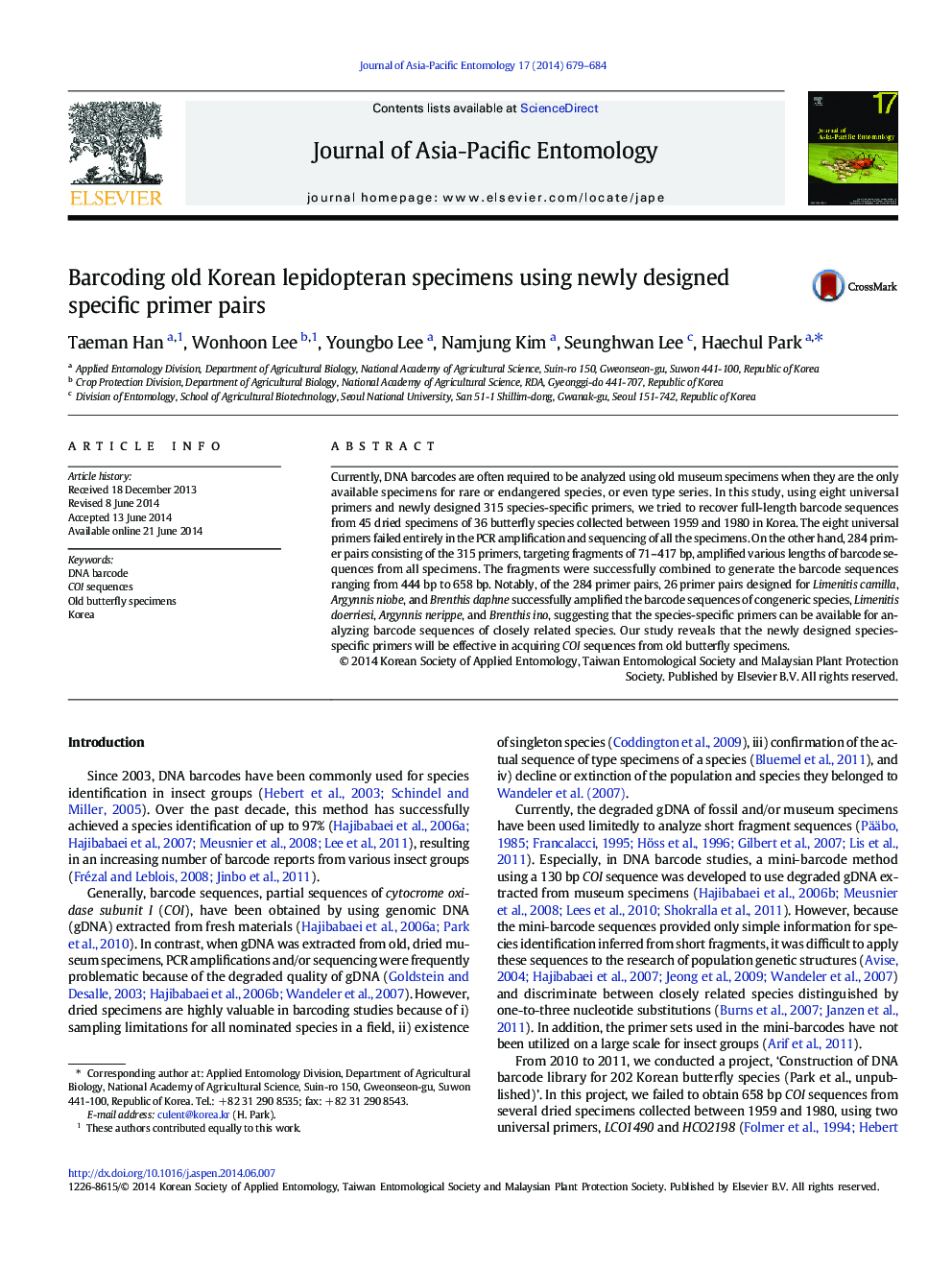| Article ID | Journal | Published Year | Pages | File Type |
|---|---|---|---|---|
| 4524514 | Journal of Asia-Pacific Entomology | 2014 | 6 Pages |
•The universal primer sets for DNA barcode were ineffective in the old specimens.•Using species-specific primers is more effective than universal primers.•The successfully retrieved barcode sequences are distinctly increased up to 97.6%.
Currently, DNA barcodes are often required to be analyzed using old museum specimens when they are the only available specimens for rare or endangered species, or even type series. In this study, using eight universal primers and newly designed 315 species-specific primers, we tried to recover full-length barcode sequences from 45 dried specimens of 36 butterfly species collected between 1959 and 1980 in Korea. The eight universal primers failed entirely in the PCR amplification and sequencing of all the specimens. On the other hand, 284 primer pairs consisting of the 315 primers, targeting fragments of 71–417 bp, amplified various lengths of barcode sequences from all specimens. The fragments were successfully combined to generate the barcode sequences ranging from 444 bp to 658 bp. Notably, of the 284 primer pairs, 26 primer pairs designed for Limenitis camilla, Argynnis niobe, and Brenthis daphne successfully amplified the barcode sequences of congeneric species, Limenitis doerriesi, Argynnis nerippe, and Brenthis ino, suggesting that the species-specific primers can be available for analyzing barcode sequences of closely related species. Our study reveals that the newly designed species-specific primers will be effective in acquiring COI sequences from old butterfly specimens.
Graphical abstractPCR strategy for retrieving DNA barcode region (658 bp fragment) of COI gene from old, dried specimensFigure optionsDownload full-size imageDownload as PowerPoint slide
